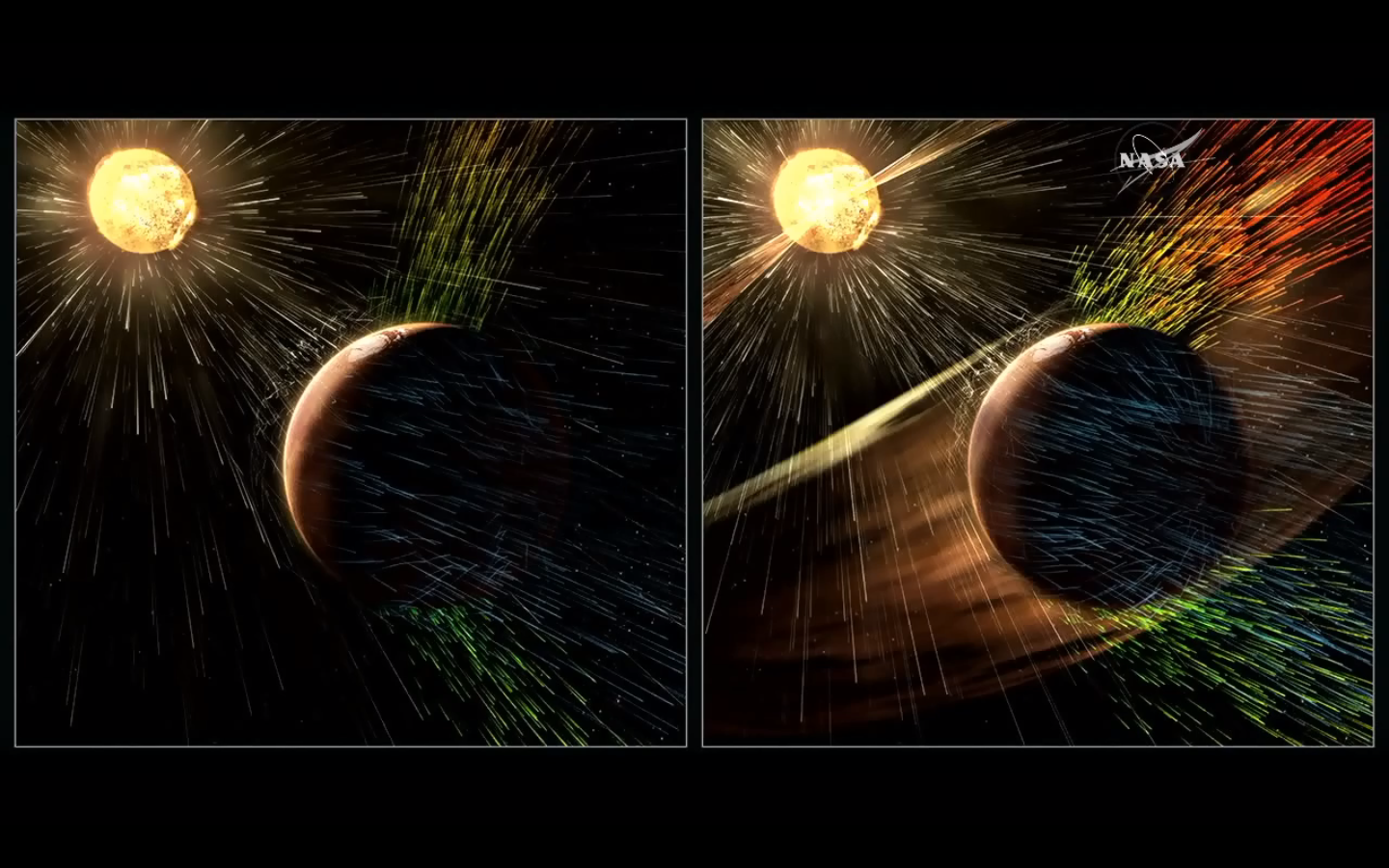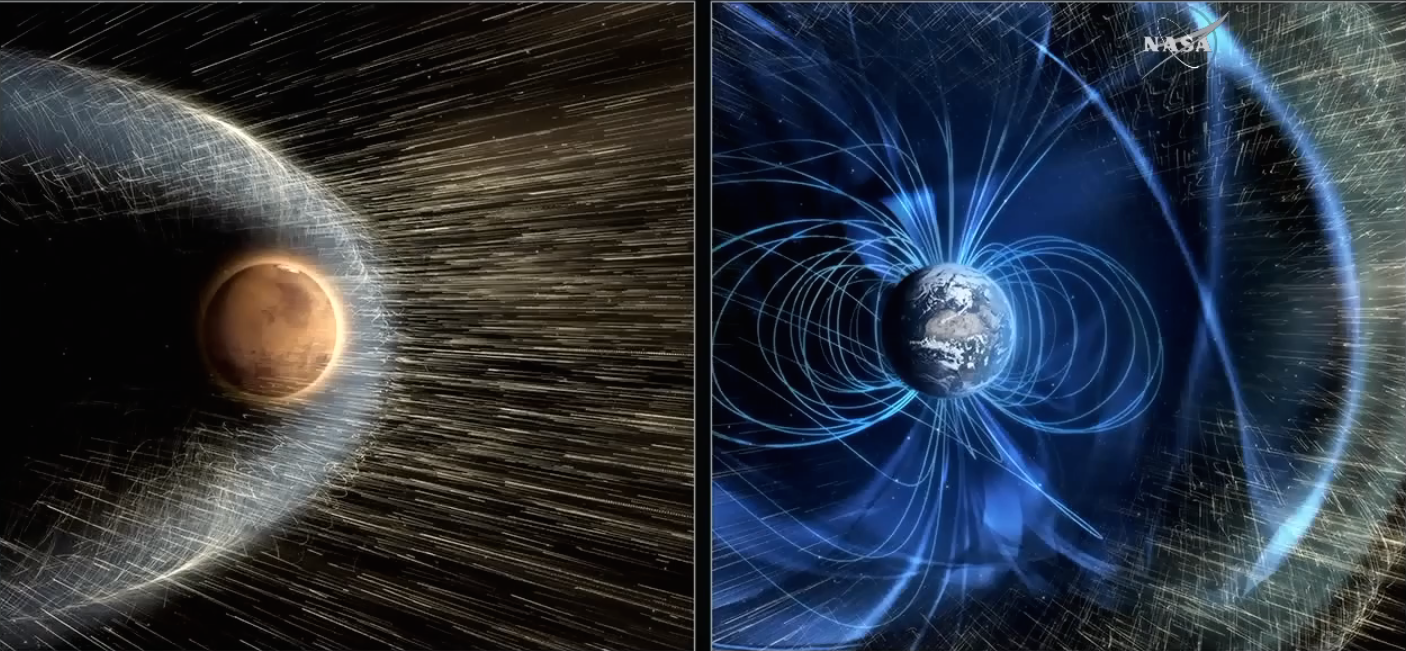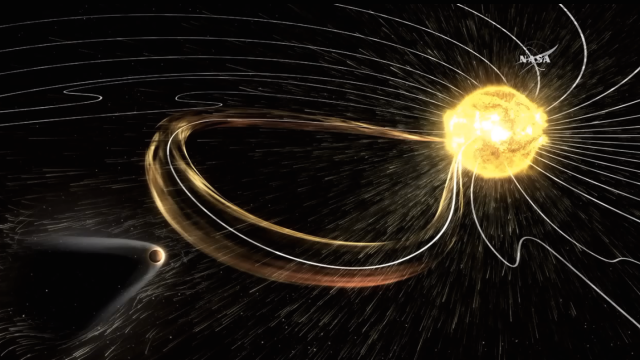Mars today is a dry, frozen place. But this was not always the case. Ancient Mars was likely warm and wet, much like Earth. So what happened to change it? Thanks to brand new results from NASA’s MAVEN mission, announced today, we may finally know. Blame the Solar winds.
The Solar Winds
“When we look at ancient mars we see a different kind of surface, an environment that was able to support water on the surface” said MAVEN principle investigator Bruce Jakovsky today. “So what happened to the carbon dioxide in that atmosphere, what happened to the water on early Mars?”
Over the last year, MAVEN has been studying Mars’ atmosphere carefully. Using that data, researchers revealed (along with the simultaneous publication of the results in Science and Geophysical Research Letters) that, under bombardment from solar winds, Mars’ atmospheric gases were being striped away.
While the solar winds don’t directly strike the planet’s surface, the solar winds have been stripping atmospheric gas around the planet steadily, coming off in bursts as Jasper Halekas, MAVEN’s lead instrument investigator explained “like the shock wave around a jet plane.”
As the solar winds carried off more and more of Mars’ atmospheric gas, like you see above, the planet was left less and less able to sustain the watery surface it once had. “The analogy I use,” Jakovsky explained, “is when I step out of the shower into the breeze, the water in my hair is just whisked away by the wind.”
Today, that loss of atmospheric gas is continuing at the rate of about 113g of gas per second. But, researchers believe that in Mars’ earlier days, as it first began to lose atmospheric gas, that rate was much higher. And even today, that rate can easily jump 10-20 times during a solar storm, like you see in this comparison between the average rates and the solar storm rates:

Is Mars Earth’s Future?
So, if Mars was a once a wet planet that lost its water along with its atmosphere, what about Earth? Should we worry that our own home might one day look like the red planet’s dry, dusty surface? Fortunately, there’s something significant standing in the way: Earth’s magnetic field.
Like Mars, Earth is also subject to powerful solar winds — and like Mars, it also loses some of its atmospheric gases. But the geomagnetic field repels it enough that it does not run up as directly against the atmospheric gases:

Of course, as researchers noted during their announcement of the results today, 3.7 billion years ago, early Mars also once had a geomagnetic field protecting it, a fact that allowed its ancient waters to flow. It was losing this that set off the chain reaction that eventually turned Mars into the dusty, red, frozen surface that we know. “The turn-off of the magnetic field is what allowed the turn-on of the stripping by the solar wind,” noted Jakovsky.
Top image: Solar winds sweep against Mars’ atmosphere/NASA. All images and charts via NASA
